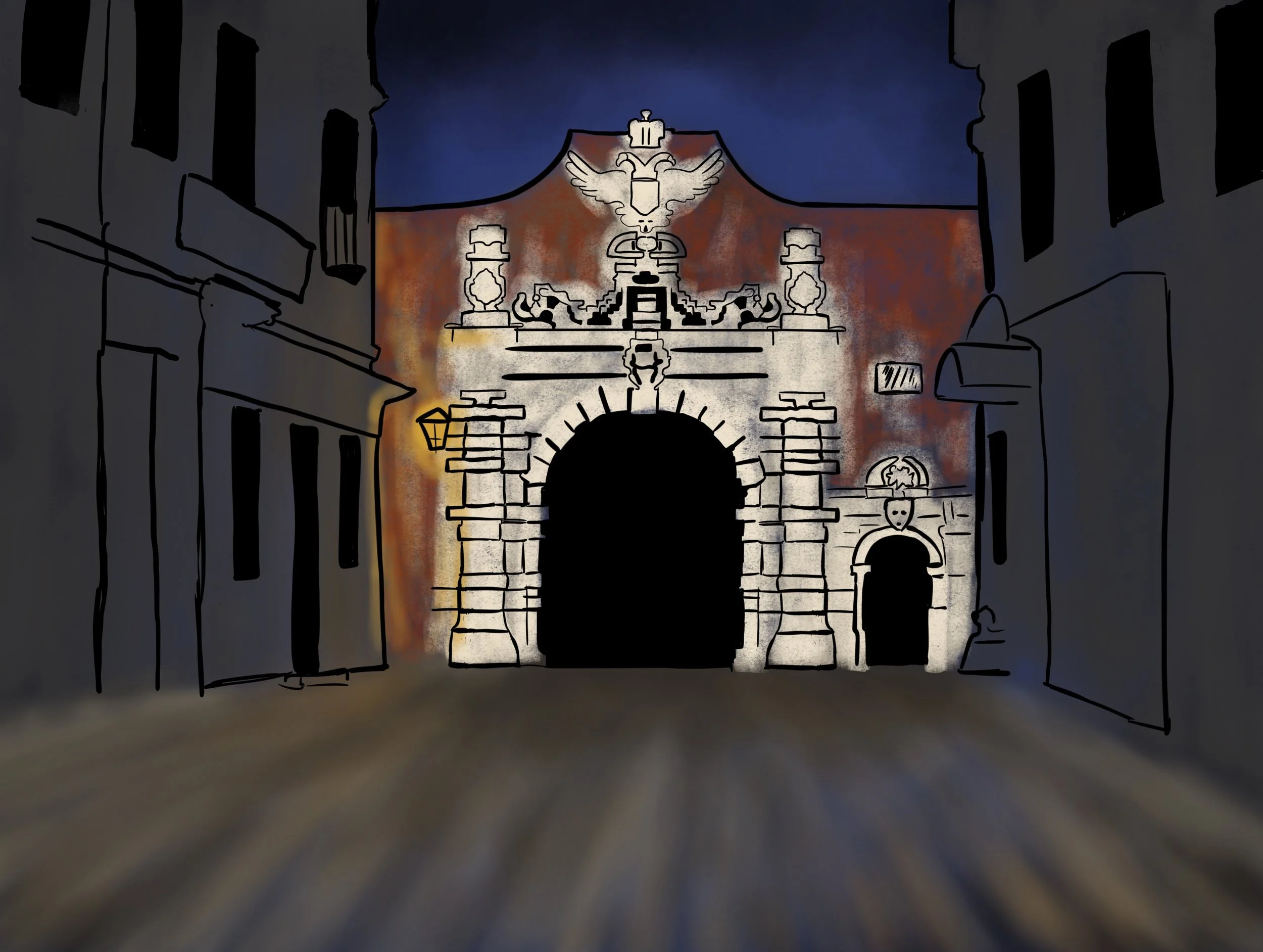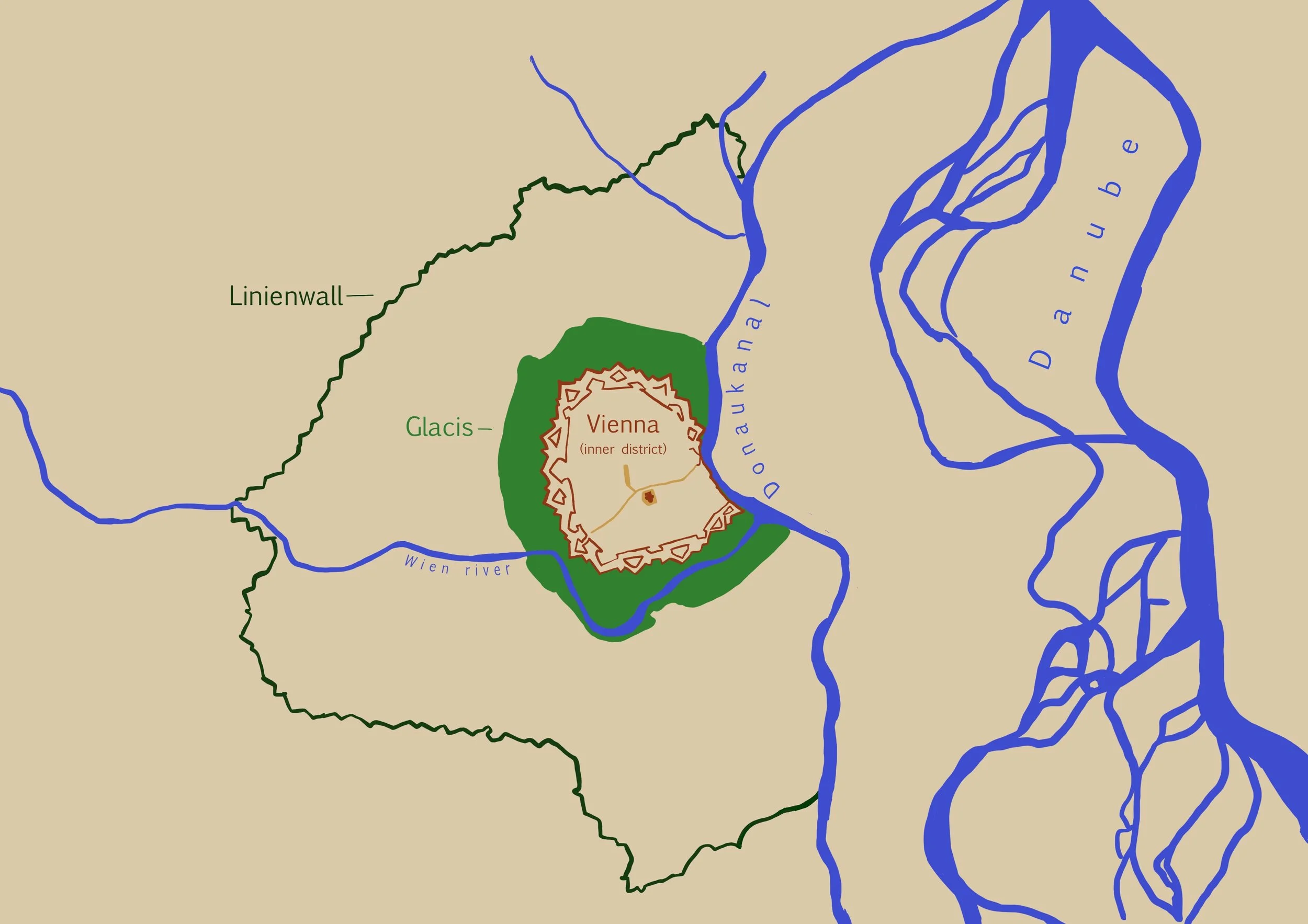Fortress Vienna - The Big City Wall
Dear Alexandre,
A few weeks back, I came across a sensational book in the library of a friend. It was a book full of old engravings of castles in Austria from after the medieval period. It also held a beautiful picture of Vienna from a time long gone. “That’s a fortress!”, commented a friend from a different continent in surprise and there I realized, that as a foreigner in Vienna you might not know that much about the big wall that once surrounded the city.
It is known that Romans already had built their usual palisades and trenches around their camp of Vindobona that used to go from the Donaukanal uphill in the region around the Stephansdom to the Tuchlauben. What is still there is the name of one of the inner city’s widest streets, the Graben – the trench.
The House of Babenberg fortified the old Roman lines and built a classic medieval city wall. After the huge sum that Herzog Leopold V. got as a ransom for Richard Lionheart (a story of its own for sure), more walls were built and the Graben was filled up again, which is why it is so nice to walk there or even dance there under the lovely chandeliers they put up in winter. Hach! ☺️ But it is autumn now and I need to concentrate. New gates were built like the Stubentor and the Schottentor that you certainly have heard of as a user of the U-Bahn, the Viennese metro system.
Let’s go to 1529 as Sultan Suleiman I. tried to conquer Vienna in a siege that might have been successful, if it wasn’t for the rainy weather that held up the transport of the real heavy wall destroying canons. Therefore his army tried to literally undermine the walls – a tactic where mine shafts are built to go underneath the wall, followed by blowing everything up in the hope the wall will crumble down into the hole underneath. The infantry would then storm over the broken pieces and take the city by storm – but that didn’t work out for Suleiman. His men managed to blow up a big piece of wall, but it fell towards them making it quite hard to really storm and when it is not a storm but just a wind, the protectors of the city have enough time to shoot and pike the enemies, which is why Vienna wasn’t taken. But as you can imagine the whole siege-thing made people quite afraid of another attack, so a lot of work was put into making Vienna a fortress – Italian style apparently, as I read. It got huge bastions and other wall stuff, which names I don’t want to look up in English, and trenches in front of it, where they let rivers run through. The wall stood about where the Ringstraße runs today, surrounding the now called Innenstadt (inner district) that was the whole of the city of Vienna back then. And around that wall it got a ring of free fields, called the Glacis, so that shooting attackers would be easier. With the pointy star-like design Vienna looked like a spiky hedgehog-city ready for battle. And battle came. 1683 the Turkish army came back and the second siege of Vienna began. Vienna’s wall got really challenged there. But this is also another story – a big one of war and death. Vienna did not fall.
I made a little sketch for you to see the spiky design of the city wall as well as the zick-zack Linienwall. I also marked the Stephansdom in red and drew in the Kärntnerstraße, the Rotenturmgasse, the Graben and the Stephansplatz. Apart from the Wien river and the Donaukanal you can also see the Danube in its wild shape, before any regulation was made.
In 1704 another project to protect Vienna was started – the Linienwall. Everyone between 18 and 60 years old living inside and outside of the new zick-zack line had to get their hands dirty and work on the project, which is the reason it actually got finished in only 4 months. At first it was just dirt and soil, later it got fortified with brick stone walls. At 4 meters high and 4 meters tall it was quite huge, I would say and it ran where the big street we just call Gürtel (belt) runs today (and the U6 to stay in U-Bahn terms). This Linienwall was never really challenged by battle, but it was handy to use as a tax border. Everyone passing through to the city had to pay a fee at the stations at the gates. The streets going in were called Linien (lines) which is a bit funny in my eyes because now Straßenbahnlinien (tram lines) are leading into the city along those streets and I also have to pay a fee, if I use them to go into the city – somethings never change 😉.
There you have it. Vienna used to only be the inner district, surrounded by a wall that is now the Ring or Ringstraße (ring street), if you want to stay formal. That the Gürtel is so wide and surrounds Vienna’s inner districts from the 3rd to the 9th is, because it used to be a big wall of green and brickstone. Now Vienna is much bigger than that of course. When you look at the Öffi-map in the U-Bahn wagons you can also see the ring-like shape of the S45 that used to be called Vorortelinie (suburban line), because it runs from suburb to suburb to suburb. It is not visible anymore that they were once outside of Vienna and different villages as they all grew together over time. The names with the -dorf (village) ending still tell this tale; Nußdorf, Pötzleinsdorf, Hütteldorf for example, but also harder to translate villages like Oberdöbling, Krottenbach und Hernals - they all used to be villages close to the big city.
The big city wall around the inner district was taken down in the middle of the 19th century at the order of Kaiser Franz Josef. The Ringstraße and their famous buildings like the city hall, the University, the Burgtheater and the two big museums were built at the same time. Some pieces of the bastions are still there and you can see how high up they were, when you go to the Pasqualatihaus on top of the old Mölkerbastei (with a Beethoven museum inside) or the Palais Coburg that I think has this vampiric aura sitting up high on its stony throne. Old restored pieces of the wall can be seen at the U3 station Stubentor, old pieces of the Linienwall – sprayed with some quite modern graffiti – can be seen when you travel by S-Bahn through Vienna.
I hope my little walk around town was fun for you and maybe even enhances your joy riding the Öffis through Vienna,,
Have fun spotting all the -bastei and -tor stations 😊

